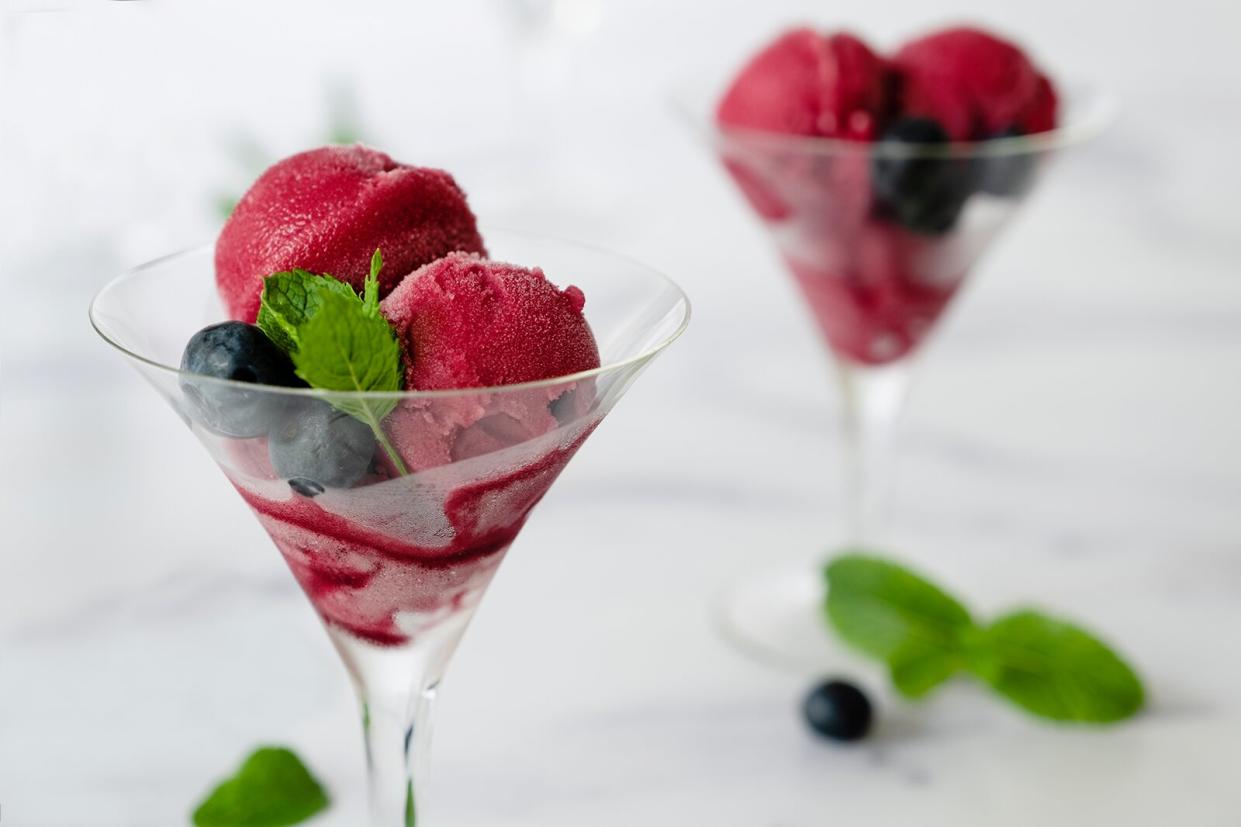What's the Difference Between Sorbet and Granita?

Brycia James / Getty Images
On a very hot day, we crave a cooling scoop of something light, bright, and purely delicious. But in the world of frozen desserts, there are as many variations in form as there are flavors in the freezer case: Sherbet, granita, gelato, ice cream, frozen yogurt, paletas —not to mention those made with alternative dairy products. We know and love them all. The most refreshing of the pack are sorbet and granita—but how do we define them and what it is the key difference between these two treats?
Related: The Scoop on Making the Best Homemade Ice Cream
Similarities
Both sorbet and granita are sugary, frozen mixtures of fruit (and sometimes other flavors) and water (sometimes with the addition of alcohol). Both are vegan by nature. Both are light, with a single dominant flavor. Granita is traditionally made and served in Sicily, and while sorbet (sorbetto in Italian) sounds French, its origins can be traced to ancient Persia.
Differences
The main difference between granita and sorbet is in the way they are made. Sorbet, like ice cream, sherbet, and gelato, is churned in a machine, which consistently freezes the ingredients while lightly folding in air. Most importantly, the churning prevents formation of ice crystals. Granita, on the other hand, is all about the ice crystals. The process of making it is closer to that of making shaved ice: A syrup, or puréed fruit plus liquid is poured into a shallow dish and frozen in stages. By methodically scraping it with a fork, or whisking it, the unique texture of grainy shards or crystals is formed.
Granita
It makes sense that granita is a specialty of Sicily, where the summers are intensely hot. "I love granita," says food writer Laurel Evans, who moved to Italy more than 20 years ago and is the author of Liguria, The Cookbook: Recipes from The Italian Riviera. "I came from a small town in Texas, and grew up on snow cones, so when I had my first real granita made with actual fruit, it blew my mind."
There are many bright, fruit granite (plural) that use juicy, seasonal fruits, such as strawberries, lemons, and melons, to best effect. A regional flavor in Sicily is mulberry, or gelso. Even though she loves these fruit ices, when Evans began exploring local flavors, it was something different that drew her in: "My favorite is almond, followed closely by coffee, then mint."
Coffee granita is often served at coffee bars with a dollop of whipped cream on top and is enjoyed early in the day. "You don't see it much in Northern Italy; Granita is traditionally a Sicilian treat, and you will find it everywhere there," Evans says. "It's something you get at the beach or the gelateria. The Sicilians will even eat it for breakfast in a brioche bun."
Sorbet
Sorbetto (aka sorbet) is another story. Here in America, where we enjoy it for dessert in restaurants or as an afternoon treat and can even buy it in the supermarket, sorbet flavors are pretty standard. In Italy, the spectrum is wider. Evans says she was surprised to find that most gelaterias make a chocolate sorbetto, which is dark chocolate, water, and sugar, but no milk. "I discovered this in a moment when I was avoiding dairy, and I was so excited," Evans says. "I also love a good lemon sorbetto when I'm in the mood for something refreshing. Often times, trattorias in Italy will offer you one at the end of the meal, mixed with a little vodka until slushy, drinkable, and just boozy enough."

